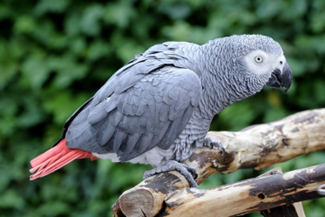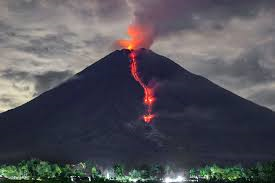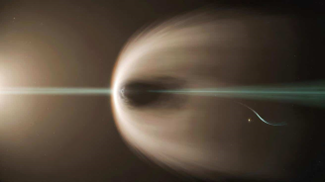Indian Polity and Governance
Article 240:
-
- Context: Talks of bringing Chandigarh under Article 240 of the Constitution.
- Provision: Article 240 empowers the President of India to make regulations for certain Union Territories (UTs) for good governance.
- Applicability: UTs without a legislative assembly, e.g., Lakshadweep, Dadra & Nagar Haveli and Daman & Diu, etc.
- Purpose: To legislate executive rules and regulations for peace, good governance, and public order in these UTs.
- Limitation: Regulations must not conflict with existing Central laws; Parliament can override them.
- Significance: Ensures administrative flexibility in UTs where local legislatures do not exist, maintaining governance efficiency.
(PIB)
Second WHO Global Summit:
-
- WHO and the Government of India have signed a Memorandum of Understanding to co-host the Second WHO Global Summit on Traditional Medicine (New Delhi, December 17–19, 2025), marking a new chapter in global collaboration for health and sustainability.
- With its theme, “Restoring balance: The science and practice of health and well-being”, it will mobilise multi-stakeholder action in support of WHO’s new 10-year Global Traditional Medicine Strategy (2025–34), adopted at the 78th World Health Assembly earlier this year
(TH)
International Developments
IBSA summit:
-
- Context: Sixth IBSA summit, a trilateral grouping of India, Brazil, and South Africa.
- IBSA stands for India, Brazil, and South Africa, a trilateral grouping of three major democracies and emerging economies from Asia, South America, and Africa.
- Established in 2003 through the Brasilia Declaration to promote South–South cooperation.
- Aims to strengthen cooperation in areas like trade, investment, energy, science & technology, defence, health, and agriculture.
- Works to reform global governance institutions, especially the United Nations Security Council (UNSC), WTO, and IMF, advocating multipolarity.
- IBSA Fund (also called the IBSA Facility for Poverty and Hunger Alleviation) established in 2004, supported by UNDP, finances development projects in least developed countries (LDCs) in Africa, Asia, Latin America.
- It is distinct from BRICS because it consists only of democracies and does not include China or Russia.
(TH)
Geography, Mapping, Ecology & Environment
African grey parrot (Psittacus erithacus):
-
- Context: State Forest Departments across India have no record of African grey parrot trade, reveal RTI responses.
- Distribution: Native to the rainforests of West and Central Africa.
- Conservation Status: Listed as Endangered on the IUCN Red List due to habitat loss and illegal pet trade.
- Key Features: Highly intelligent; known for exceptional mimicry and cognitive abilities.
- Threats: Deforestation, capture for the pet trade, and hunting.
- Conservation Measures: Listed under CITES Appendix I, prohibiting international trade of wild-caught individuals; captive breeding programs are encouraged.
- To breed CITES Appendix I species like the African grey parrot, a valid breeding licence is required. To obtain this, an application must be submitted to the Chief Wildlife Warden under the Breeders of Species Licence Rules, 2023.
- The applicant must also have the CITES import permit, a Directorate-General of Foreign Trade import licence number, and a no-objection certificate from the respective Chief Wildlife Warden for the import before applying for the breeding licence.

(TH)
Chimpanzees:
-
- When, in 1960, the British primatologist Jane Goodall first observed chimpanzees at Gombe National Park in Tanzania using twigs to fish termites out of anthills, she was making scientific history. Researchers had until then believed only humans could use tools.
- Now, a study published in Science on October 30 has suggested that another supposedly uniquely human trait — the ability to weigh evidence, revise beliefs, and change one’s mind — may not be ours alone.
- The study shows that they are aware of the reasons for their choices, a skill that has been believed to be uniquely human.
- Researchers say the study raises questions about the evolutionary roots of human rationality and prompts us to ask how much of this ability is shared with the great apes.
(TH)
Joint Crediting Mechanism:
-
- Context: India called the Joint Crediting Mechanism (JCM) a “key tool for equitable, scalable global climate action” at COP30 in Belém, Brazil.
- JCM has expanded to 31 partner countries and over 280 projects are being implemented under Article 6 of the Paris Agreement.
- India-Japan cooperation is reaffirmed: A Memorandum of Cooperation signed on 07 Aug 2025 aligns JCM with Article 6, enabling joint mitigation projects, finance mobilisation, technology deployment and transparent emission-reduction allocation.
- JCM is expected to support India’s Nationally Determined Contributions (NDCs) and Long-Term Low Emission Development Strategy by focusing on advanced low-carbon technologies, domestic ecosystem development and localisation of high-technology interventions.
- Priority sectors listed under JCM’s future pathway include: renewable energy with storage, sustainable aviation fuel, compressed biogas, green hydrogen, green ammonia and hard-to-abate sectors such as steel, cement and chemicals.
(PIB)
Mount semeru eruption:
-
- How volcanic eruptions take place:
- A volcanic eruption happens when deep-earth heat melts rock into magma, which rises because it’s lighter than surrounding rock and accumulates in a chamber near the surface.
- As the magma chamber fills, pressure increases until magma breaks through cracks and vents onto the surface as lava.
- The explosivity of an eruption is largely determined by the viscosity of the magma and how easily gases can escape:
- How volcanic eruptions take place:
1. Low-viscosity (runny) magma allows gases to escape easily → less explosive, more flow-type eruptions.
2. High-viscosity (thick, sticky) magma traps gases → pressure builds and leads to more explosive eruptions, producing tephra, ash, and debris.

-
- Example: The convergence of magma composition, gas content, and crustal conditions explains why some volcanoes like Mount Semeru in Indonesia produce violent eruptions.

(IE)
Science & Technology
3I/Atlas:
-
- It is the third confirmed interstellar object after 2I/Borisov and 1I/ʻOumuamua, passing through our Solar System.
- It was first spotted on July 1, 2025 by the Asteroid Terrestrial‑impact Last Alert System (ATLAS) survey telescope in Chile, at about 670 million km from the Sun.
- Its trajectory is open-ended (hyperbolic orbit) — its speed and path show it is not bound by the Sun’s gravity, indicating an origin outside our Solar System.
- Scientists study interstellar objects like 3I/ATLAS because they carry material from other star systems and can provide clues about the formation conditions of worlds beyond our Solar System.
- Key detection criteria: unusually high speed far from Sun, hyperbolic trajectory (no returning aphelion), origin outside Solar System.

(IE)
History, Art & Culture
Gatka:
-
- Context: Performed at 350 years of the martyrdom of Guru Tegh Bahadur.
- Gatka is a traditional martial art associated with Sikh warriors, particularly the Nihang Sikh community of Punjab.
- It involves the use of sticks, swords, shields, and other traditional weapons, practiced both as self-defense and as a spiritual discipline.
- Gatka emphasizes coordination, speed, footwork, and rhythmic movement, often performed with devotional music.
- Recognized as a traditional sport in India and promoted under the Khelo India programme for preservation and awareness.
- Practiced during cultural events like Hola Mohalla, Gurpurabs, and religious festivals in Punjab.
- Gatka is considered a form of Shastar Vidya, an ancient Sikh martial tradition historically used by Sikh warriors in battles.

(TH)
Terms in news
Pharmacogenomics:
-
- Pharmacogenomics examines how genetic variations affect an individual’s response to medications, determining whether a drug will be effective, ineffective, or even dangerous for a particular person.
- Studies show that approximately 90% of people carry at least one actionable pharmacogenetic variant
(TH)
Random forest:
-
- A random forest is a machine-learning method that makes predictions by combining the decisions of many simpler models called decision trees.
- A decision tree works like a tree from bottom-up. At each node, it asks a question about the data, e.g. “is a person’s age greater than 30?”. Then, depending on the answer, it moves left or right until it reaches a final decision at a ‘leaf.’
- A random forest minimises this issue by building a large number of trees, each trained on a slightly different random sample of the data.
(TH)
Captions and Quotations
Health:
-
- Health must heal, not harm; progress must sustain, not consume; and science must serve, not separate.
- Happiness is not something we possess. It is something we pursue.
(TH)
Important data/facts
Polity
India Justice Report (IJR):
-
- More than half (55%) of the cases before 362 Juvenile Justice Boards (JJBs) across the country remained pending as of October 31, 2023.
- While 92% of 765 districts in India have constituted JJBs, the authority dealing with children in conflict with law, the pendency rate varies widely, from 83% in Odisha to 35% in Karnataka.
- Unlike the National Judicial Data Grid, there is no Central and public repository of information on the JJBs.
(TH)
PRACTICE MCQ’S
Q1. With reference to the African Grey Parrot (Psittacus erithacus), consider the following statements:
1. It is native to the rainforests of West and Central Africa.
2. It is listed under CITES Appendix II to regulate its international trade.
3. It is known for its exceptional mimicry and cognitive abilities.
Which of the statements given above are correct?
a) 1 and 2 only
b) 1 and 3 only
c) 2 and 3 only
d) 1, 2 and 3
Answer: B
Explanation:
Statement 1 is correct: Native to West and Central African rainforests.
Statement 2 is incorrect: It is listed under CITES Appendix I, not II, which strictly prohibits international trade of wild-caught individuals.
Statement 3 is correct: African Grey Parrots are renowned for high intelligence and mimicry skills.
Q2. With reference to the IBSA Dialogue Forum, consider the following statements:
1. IBSA was established through the Brasilia Declaration in 2003.
2. China and Russia are permanent members of the IBSA grouping.
3. The IBSA Fund supports development projects in Least Developed Countries with the assistance of UNDP.
4. IBSA primarily promotes South–South cooperation and reforms in global governance institutions.
How many of the above statements are incorrect?
a) Only one
b) Only two
c) All three
d) None
Answer: A
Explanation:
Statement 1 is correct: IBSA was formally established in 2003 through the Brasilia Declaration, which laid the foundation for trilateral cooperation among India, Brazil, and South Africa.
Statement 2 is incorrect: China and Russia are not members of IBSA. The grouping consists exclusively of three major democracies from three continents: India (Asia), Brazil (South America), and South Africa (Africa).
China and Russia are part of BRICS, not IBSA. This is the key fact that makes the statement incorrect.
Statement 3 is correct: The IBSA Fund (2004) works with the United Nations Development Programme (UNDP) to finance development and poverty-alleviation projects in Least Developed Countries (LDCs), mainly in Africa, Asia, and Latin America.
Statement 4 is correct: One of IBSA’s key objectives is to strengthen South–South cooperation, advocate for a multipolar world, and push for reform of global governance bodies such as the UN Security Council, WTO, and IMF.
Q3. With reference to volcanic eruptions, consider the following statements:
1. A volcanic eruption occurs when magma rises to the surface due to lower density compared to surrounding rock.
2. Highly viscous magma generally leads to less explosive eruptions because gases escape more easily.
3. The build-up of pressure in the magma chamber is one of the major reasons behind explosive eruptions.
Which of the statements given above are correct?
a) 1 and 2 only
b) 1 and 3 only
c) 2 and 3 only
d) 1, 2 and 3
Answer: B
Explanation:
Statement 1 is correct: Magma rises because it is lighter (less dense) than surrounding rock.
Statement 2 is incorrect: High-viscosity magma traps gases, making eruptions more explosive, not less.
Statement 3 is correct: Trapped gases and pressure buildup in the magma chamber contribute to explosive eruptions.
Q4. With reference to Article 240 of the Indian Constitution, consider the following statements:
1. It empowers the President of India to make regulations for Union Territories with or without a legislative assembly.
2. Regulations made by the President under Article 240 cannot be overridden by Parliament.
Which of the statements given above is/are correct?
a) 1 only
b) 2 only
c) Both 1 and 2
d) Neither 1 nor 2
Answer: D
Explanation:
Statement 1 is incorrect: Article 240 applies only to certain Union Territories that do not have a legislative assembly (e.g., Lakshadweep), not all UTs.
Statement 2 is incorrect: Regulations made by the President can be overridden by Parliament; they are subordinate to Parliamentary law.
Q5. With reference to Gatka, consider the following statements:
1. It is a traditional martial art form primarily associated with the Sikh community of Punjab.
2. It is officially promoted under the Khelo India programme.
3. It involves only unarmed combat techniques without the use of weapons.
Which of the statements given above are correct?
a) 1 and 2 only
b) 1 and 3 only
c) 2 and 3 only
d) 1, 2 and 3
Answer: A
Explanation:
Statement 1 is correct: Gatka is historically linked with Sikh warriors, especially the Nihangs.
Statement 2 is correct: Gatka has been recognized and promoted under the Khelo India initiative.
Statement 3 is incorrect: Gatka is a weapon-based martial art, traditionally involving sticks, swords, shields, and other arms.
Spread the Word
